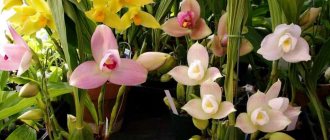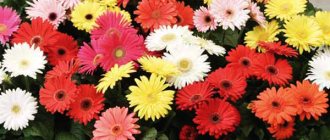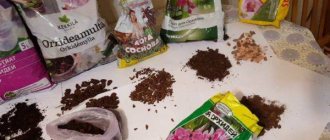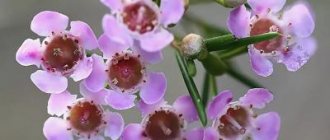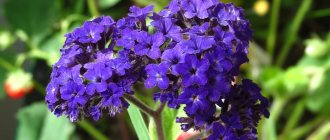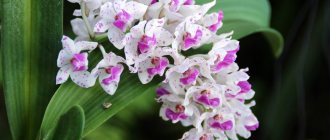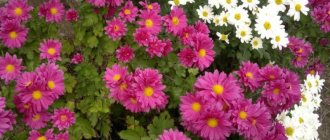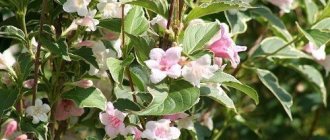In the language of flowers, gerbera means happiness, joy and openness - therefore, a bright, but at the same time striking in its simplicity, the flower was able to win the hearts of many fans. The South American beauty, which is also called the Transvaal (Madagascar) chamomile, attracts not only its appearance and romanticized image, but also the number of varieties, reaching about 80. At least 1000 varieties have been bred from them, differing in color, size and shape.
Gerbera is one of the most recognizable flowers
What do gerbera flowers look like?
Gerbera is one of the most recognizable flowers after roses, lilies and tulips. This plant was introduced into cultivation in the nineteenth century: the first variety that gave rise to all cultivated varieties was Jameson's gerbera. This is a rather large perennial herbaceous plant belonging to the Asteraceae, or Asteraceae, family.
You've probably noticed bright baskets in bouquets, reminiscent of the sun or multi-colored daisies - most likely it was a guest from Madagascar. Characteristic external features are a thick long stem, dark green oblong leaves collected in a basal rosette and inflorescences of rich colors in the shape of baskets, reaching a diameter of 10 cm.
Gerbera in a bouquet or in a pot is a beautiful, symbolic and even useful gift
The structure of inflorescences, mistakenly taken for one flower, is not as simple as it seems at first glance. The fact is that the “basket” is not just one flower. It consists of petals, which are full-fledged, independent flowers, arranged in several rows. There are varieties with both regular inflorescences and double ones, more like asters. The core is also formed by many independent small tubular flowers with a variety of colors.
Depending on the properties of the inflorescences, all varieties are divided into six large groups. The shape of the petals (narrow, wide), the size of the inflorescence itself and the “doubleness” are taken into account. Each of the varieties grown today is a product resulting from work with Madagascar Jameson and green-leaved daisies; There are also hybrid types. Below are descriptions of the most popular varieties of gerbera in various shades in floriculture.
We also recommend reading:
16 most popular indoor plants Physalis: description of species and varieties, technology for growing from seeds Spruce in landscape design: the best ornamental varieties and characteristics of cultivation Kalanchoe: description of types and characteristics of care at home
Diseases
What beautiful gerberas in the photo! In order for them to remain like this for a long time, you need to provide them with proper care. To do this, you need to understand what diseases they are susceptible to.
- Root rot damages the roots, causing the leaves to wither and the plant to die. The cause of this disease is improper watering. There is no need to over-moisten the soil or allow moisture to penetrate into the leaf rosette. Gerberas are treated with Fundazol.
- Gray rot is a coating on leaves and peduncles. The disease is caused by high humidity or excessive watering. To overcome the disease, you need to treat the affected areas with a solution of Fundazol.
- Another terrible disease is powdery mildew, which is characterized by the appearance of a white coating on different parts of the plant when the ambient temperature rises. This occurs due to a calcium deficiency in the soil or an excess of mineral supplements. To combat the disease, the same “Fundazol” is used. Its occurrence can be prevented by maintaining normal humidity levels, maintaining temperature conditions and ensuring good ventilation.
Thus, gerbera is a very beautiful plant that is popular among gardeners. It is widely used in landscape design and to create apartment interiors. You now know what it looks like and how to care for a gerbera. The most important thing is to create comfortable conditions for this plant, and then it will delight you with abundant flowering for several seasons.
Types and varieties of yellow gerberas
Yellow is one of the most cheerful colors, and quite a few varieties of Transvaal daisies of this shade have been bred.
Gerbera Jupiter
Pleasant flowers with a mild aroma, reaching a height of 0.4 m. Blooms once a year for 3 weeks. In appearance, Jupiter strongly resembles daisies: the petals are long and narrow. There are also terry varieties similar to chrysanthemums. They differ from ordinary ones by the presence of shorter petals located closer to the core. The color of the petals is yellow, the color of the core is black. The terry part is usually yellow-orange. Belongs to the large-flowered category, the stem length can reach 70 cm.
Gerbera Kalinka
Another variety that will give you a little cheerful sun. The variety belongs to double and semi-double gerberas with narrow leaves and is ideal for growing indoors. The diameter of the inflorescence ranges from 10-11 cm.
Gerbera Kalinka
Gerbera Terra Fame
It is considered one of the most valuable varieties of Transvaal daisies bred by selection.
Gerbera Helios
The variety fully corresponds to its name: the unusual structure of the inflorescence resembles the sun with rays of varying lengths diverging from it. The flower has three layers of petals; the closer to the core, the shorter they are. The middle itself is greenish.
Other well-known varieties with yellow inflorescences: Brigitte, Cabana, Malena, Terra Fame, Tamara, Palm Beach, Energy, Discovery, Mundi, Okibana.
Gerbera helios
Fertilizers
It is especially important to fertilize on time. Be sure to do this during the flowering period. Liquid fertilizers are used twice a month. Mineral complex mixtures that contain large amounts of calcium and potassium are best suited for this. But fertilizers can be applied only a month after transplanting or purchasing flowers. Remember that organic fertilizers are not suitable for gerberas whose leaves are very low.
It is best to give preference to liquid mixtures, such as Bona Forte. Before use, read the instructions on the package. You need to dilute the fertilizer more strongly than stated there, so that the crop will delight you with long-term flowering. This is shown in the photo of a gerbera.
Observe the leaves, because a change in their condition may indicate a lack of various minerals. So, if white stripes and spots appear, you need to add magnesium, dissolving it in a ratio of 20 g per 10 liters of water.
Pink and red gerberas
Red is the color of love and passion, and gerberas with petals in shades of scarlet and pink are extremely popular and suitable as a gift for both women and men.
Green-leaved (common) gerbera
The ancestor of most bred varieties. It is distinguished by a soft pink hue of narrow-leaved inflorescences and long serrated leaves. Height – up to 1 meter.
Gerbera mini Robin Hood
A double variety with a small but very impressive double inflorescence of a rich dark red hue. The core is usually black, with a yellowish frame. The variety is highly valued by breeders.
Gerbera mini Robin Hood
Gerbera Opium
An incredibly spectacular variety with scarlet petals in several layers. Refers to semi-double gerberas - the top layer of petals is shorter than the rest. The core is small, yellowish in color. Opium looks great in bouquets with white flowers.
Gerbera Pink Fantasy
As the name suggests, the shade of the inflorescences is pink (“Pink” - English). The petals form three rows, the core is framed by small bright pink shoots, and it itself is black, which makes the variety stand out from the rest.
Gallery: types of gerberas (40 photos)
Names and descriptions of types and varieties of orange gerberas
Orange Transvaal daisies look delightful in almost any arrangement and, like yellow, pink and red, amaze the imagination with the variety of varieties developed over the years.
Gerbera Vega
The orange-yellow beauty belongs to the American type in the traditional classification of gerberas: the variety has large flowers (up to 13 cm in length), narrow petals and high peduncles (up to 70 cm).
Gerbera Vega
Gerbera Saturn
The bright orange, lush inflorescence with a dark core produces an impressive effect and lives up to the name of the variety. The variety belongs to the group of wide-petaled Transvaal daisies with very large inflorescences reaching 15 cm in diameter on high peduncles (0.7 m).
Gerbera Golden Siren
A bouquet variety from the large-flowered category. Petals are orange-yellow; inflorescences grow to a diameter of 12 cm.
Several more popular varieties of orange Madagascar daisies: Santafe, Mex, Bisonka, mini Jambo, Sympathy, Mirage, Rudite, Alice, Zeltane, Orange Beauty, Rusinsh, Entourage, Clementine, Diplomat.
Reproduction methods
Transvaal chamomile is propagated in four ways:
- Dividing the bush. The method is applicable for plants three years old and older. In spring, the flower, which has grown to two or more leaf baskets, is divided into parts, on each of which at least 3 growth buds remain. After 6 months, the children begin to grow rhizomes.
- Rhizome. A fragment of the rhizome with part of the leaves is separated from the mother plant and transplanted into moist soil.
- Seedlings from seeds. Sowing in a mini-greenhouse with a loose airy substrate, after the first three leaves appear, the first picking is carried out, after the appearance of 5 leaves - planting for permanent residence. The planting material is not dusty, like petunias, but rather large, so sowing it is easy and simple. Simply stick the seeds with the sharp end into the moistened substrate and lightly crush them on top.
- By cuttings. From a plant that is not yet 3 years old, a part of the stem with a leaf and a node is cut off. The cutting is placed under a film in a moist substrate. After a week (when new shoots appear), the gerberas need to be transplanted into pots and provided with proper care.
Growing multi-colored gerberas in the country: options for planting and use in landscape design
Effectiveness, unpretentiousness and long-lasting flowering have made Madagascar chamomile attractive for cultivation on the site. Thanks to its wide range of colors and versatility, gerbera can be used as a garden plant in an area decorated in any style, and can be planted next to any other flower crops: roses, callas, chrysanthemums and daisies.
Most often, a hybrid form of Transvaal daisies - it is interesting because it bears fruit with inflorescences of several different shades at the same time. A guest from South America is perfect for decorating space along fences and borders, creating compositions in flower beds and slides. In addition, mini-varieties of gerberas in various kinds of decorative pots and containers, which are placed on the veranda, balcony or gazebo.
Rest period
Gerberas, photos of the flowers of bouquets of which are often found on advertising brochures of flower boutiques, are at rest in the period from November to March. At this time, watering is reduced and the bushes are moved to a cooler room than during flowering.
Despite the fact that at this time the plant does not require careful care, you need to ensure that moisture does not stagnate in the container where it is located. To do this, do not fill the Transvaal daisy with water, do not humidify the air near it, and pour out excess liquid from the pan.
Gerberas in pots in the interior of an apartment
Initially, the guest from Madagascar did not envisage breeding at home, but the art of selection works wonders, and today flower growers can at any time acquire a mini-cultivar of this wonderful plant that can adapt to the microclimate of the apartment. Whatever color they are, guests from South Africa look most harmonious in an eclectic, strict (classical) interior and country style; they go well with matching accessories and household items, such as dishes, curtains, flowerpots, etc.
The only thing you need to be careful about when choosing gerberas as a houseplant is the selection of “neighbors on the windowsill”: next to these perfectly shaped flowers, other crops may look sloppy and a little disheveled. Choose flowers of strict geometric shapes with variegated leaves and plain pots in the same color as the inflorescences, but a little lighter.
The Festival variety is ideal for growing at home on a windowsill - a compact plant with multi-colored inflorescences of various shades: today only blue gerberas are grown artificially.
History of origin
The history of the red gerbera began three hundred years ago . In the first half of the 18th century, Dutch travelers discovered bright, unusual flowers in southern Africa.
A little later, botanist Jan Gronovius described an unknown flower and began studying it seriously. Since he did not yet have a name, the scientist gave him the name of his friend, the doctor Traugott Gerber.
The flowers found were of a wide variety of colors and shades, including red (you can find out what types of gerberas are known today here).
How to replant a gerbera after purchase (video)
In addition to their attractive appearance, bright exotics from the tropics can bring great benefits to their owner, purifying the air from toxic fumes of plastic, carbon dioxide and other harmful substances. They will add optimistic notes to any interior and will please the eye for a very long time.
Transvaal daisies are an excellent solution for those who want to bring bright colors and carefree into their home or garden. A gerbera in a bouquet or in a pot is a beautiful, symbolic and even useful gift, and if you know how to properly care for the plant, it will thank you with fascinating basket inflorescences.
Watering
The key to long flowering is regular, and most importantly, abundant watering. This procedure is carried out 2 times a week, as the soil dries out. It is very important to prepare the water in advance by standing it for 24 hours. In the southern regions you can do this daily.
The watering technology is as follows: the liquid is poured along the edge of the pot or at the very root. Do not allow moisture to get on leaves or rosettes. This will lead to rotting of the plant and its subsequent death. Excess moisture is drained from the pan.
At the end of the procedure, the soil must be slightly loosened so that a crust does not form on the surface of the soil. This will cause the herbaceous perennial to dry out.

